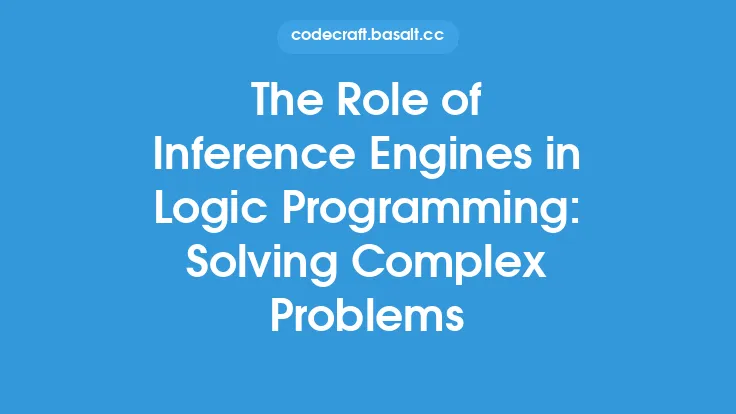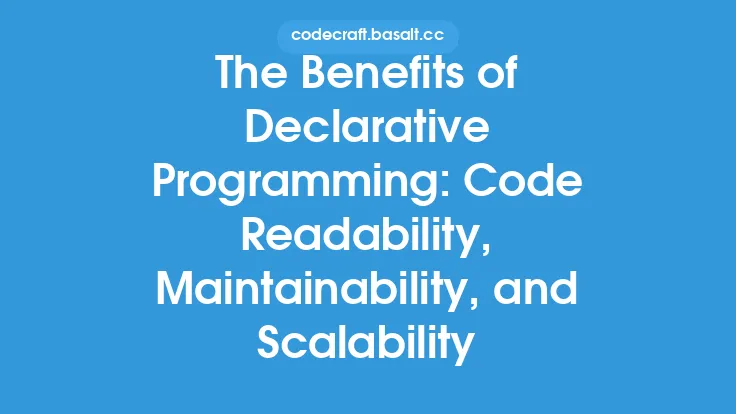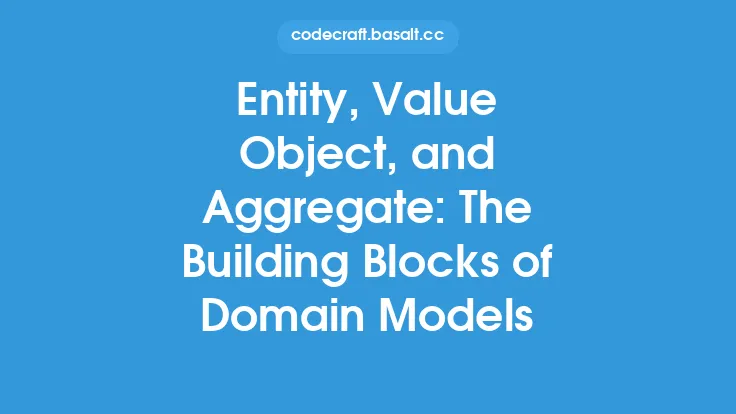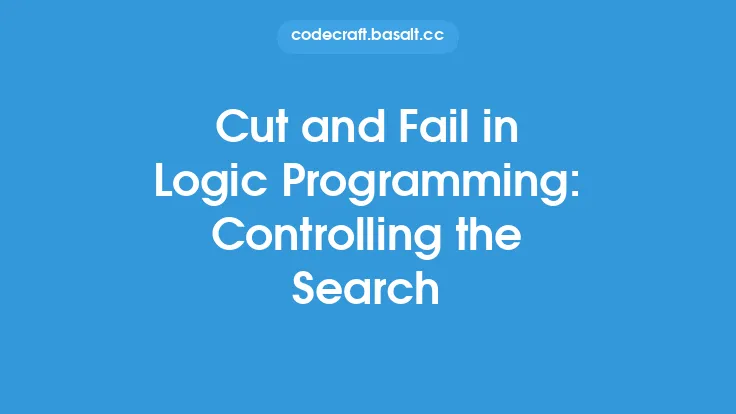Logic programming is a programming paradigm that is based on formal logic. It is a unique and powerful way of writing programs that is centered around the concept of logical statements and rules. At its core, logic programming is about defining a set of rules and facts, and then using these to make logical deductions and answer queries.
Introduction to Terms
In logic programming, a term is a basic building block of a program. It can be a constant, a variable, or a compound term. Constants are simple values such as numbers or atoms, which are symbols that have a specific meaning in the program. Variables, on the other hand, are placeholders for values that are not yet known. Compound terms are more complex and are made up of a functor and a set of arguments. The functor is a symbol that defines the type of term, and the arguments are a set of terms that provide more information about the term. For example, in the term `father(john, mary)`, `father` is the functor and `john` and `mary` are the arguments.
Rules and Their Structure
Rules are the heart of a logic program. They define the relationships between terms and allow the program to make logical deductions. A rule is made up of a head and a body. The head is a term that is being defined, and the body is a set of terms that must be true for the head to be true. The general structure of a rule is `head :- body`. The `:-` symbol is read as "if" and indicates that the head is true if the body is true. For example, the rule `father(john, mary) :- parent(john, mary), male(john)` states that `john` is the father of `mary` if `john` is a parent of `mary` and `john` is male.
Queries and Their Role
Queries are used to ask questions of the logic program. They are similar to rules, but they do not have a head. Instead, they are used to find the values of variables that make the query true. The general structure of a query is `?- body`. The `?-` symbol indicates that the query is being asked, and the body is the set of terms that must be true for the query to be answered. For example, the query `?- parent(john, X), female(X)` asks for the daughters of `john`. The program will then use the rules and facts defined in the program to find the values of `X` that make the query true.
Facts and Their Importance
Facts are statements that are known to be true. They are used to provide the basic information that the program needs to make logical deductions. Facts are similar to rules, but they do not have a body. Instead, they are simply statements that are true. For example, the fact `parent(john, mary)` states that `john` is a parent of `mary`. Facts are used to provide the foundation for the program's logical deductions, and they are an essential part of any logic program.
The Unification Algorithm
The unification algorithm is a key part of logic programming. It is used to find the values of variables that make two terms equal. The algorithm works by comparing the two terms and finding the values of the variables that make them identical. For example, if we have the terms `father(john, X)` and `father(john, mary)`, the unification algorithm will find that `X = mary`. The unification algorithm is used extensively in logic programming to find the values of variables and to make logical deductions.
Resolution and Its Role
Resolution is a key concept in logic programming. It is the process of using rules to make logical deductions. The resolution algorithm works by finding a rule whose head matches one of the terms in the query, and then using the body of the rule to find the values of the variables. For example, if we have the query `?- father(john, X)` and the rule `father(john, mary) :- parent(john, mary), male(john)`, the resolution algorithm will use the rule to find that `X = mary`. Resolution is a powerful technique that is used to solve complex problems in logic programming.
Conclusion
Logic programming is a unique and powerful programming paradigm that is based on formal logic. It is centered around the concept of logical statements and rules, and it uses these to make logical deductions and answer queries. The basics of logic programming, including terms, rules, and queries, provide the foundation for this paradigm. By understanding these concepts, developers can create complex and powerful programs that are capable of solving a wide range of problems. Whether you are working on artificial intelligence, expert systems, or other applications, logic programming is a valuable tool that can help you to achieve your goals.





